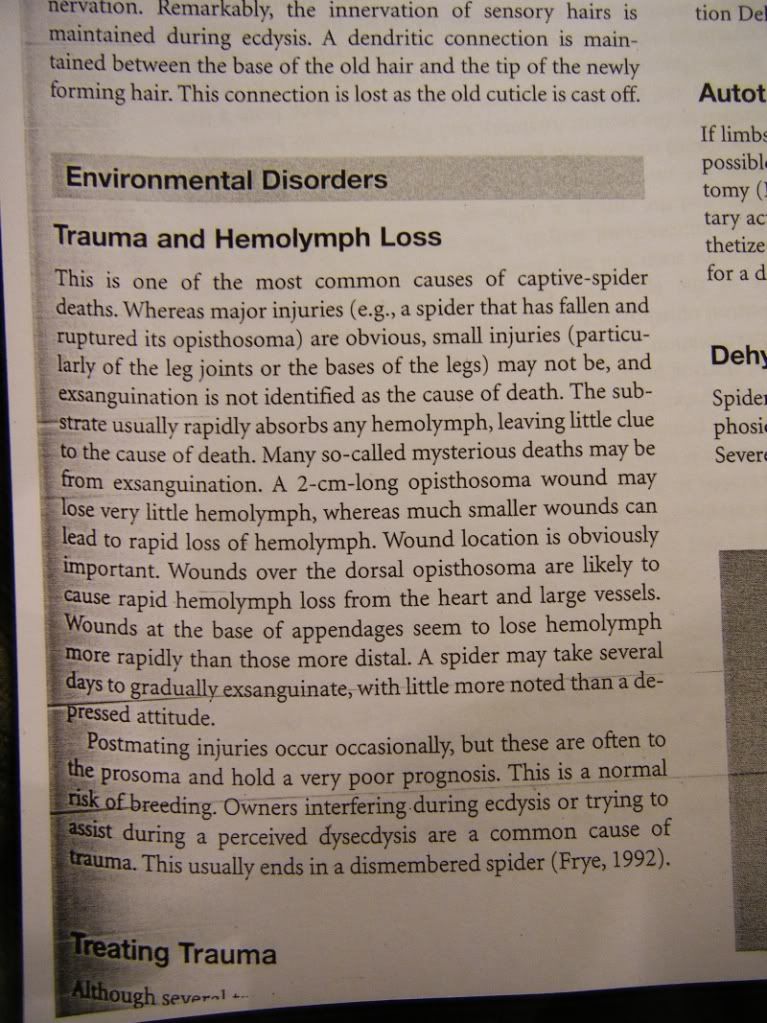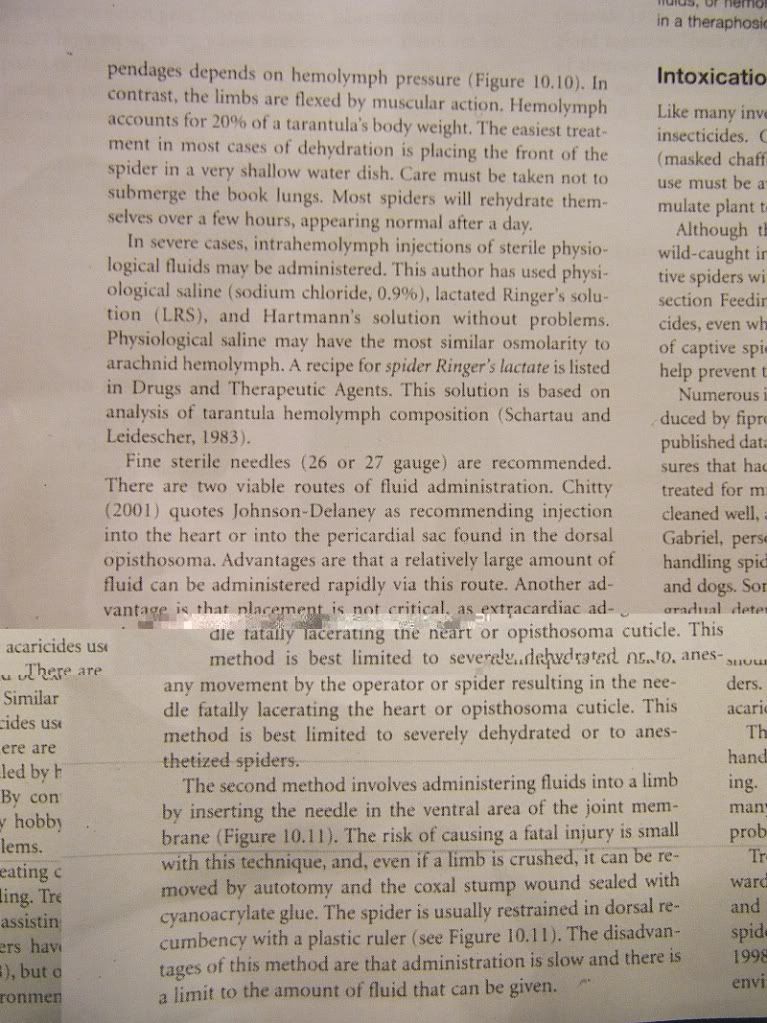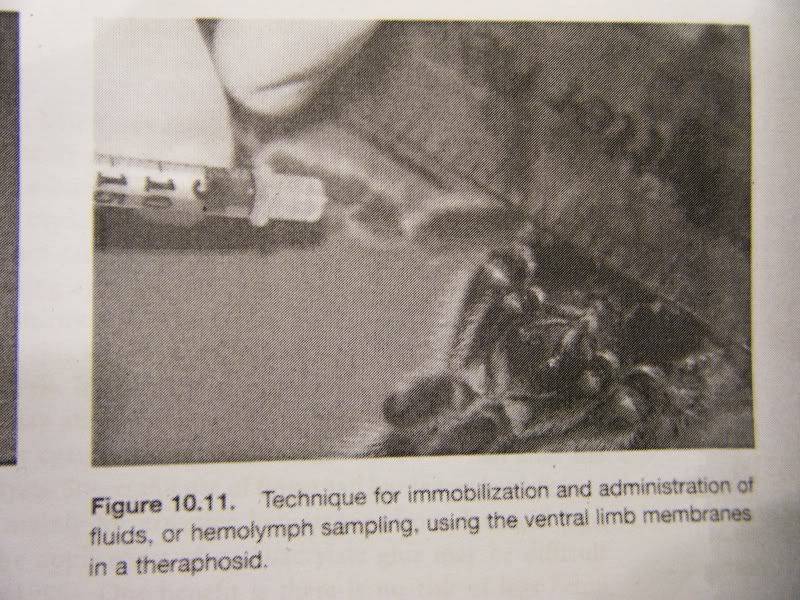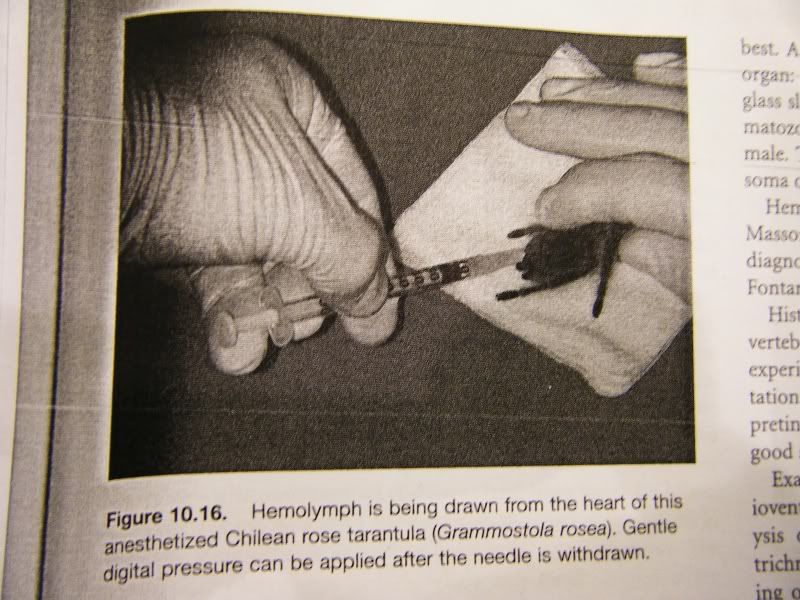- Joined
- May 6, 2005
- Messages
- 362
I read the same thing in the Tarantula Keepers Guide. I also read where some hemolymph was on purposely removed from a G. rosea and then was watched for adverse reaction. The loss of pressure caused some issues with normal funtions. It's like hydraulic pressure and there needs to be a certain amount in order for proper utilization. They then injected Ringers solution and the tarantula regained normal functions. The typical amount added is said to be up to 6% of the tarantulas weight and contrary to belief it was injected into the abdomen just making sure not to pierce the heart.




